We recently visited the Kurdish region of Iraq. Maybe it’s because of news reports, but it was nothing like we expected. It’s not Arab. It’s not a war-torn desert wasteland. It’s safe. It’s peaceful. It’s green and mountainous, graced with abundant waterfalls and hilly, fertile farmland. Plus, Arabs, Kurds and foreigners all vacation together. No wonder Iraqi Kurdistan is often called “The Other Iraq.”
Check out our Iraqi Kurdistan Travel Guide and pictures of Kurdistan. Westerners have no idea what they’re missing.
ⓘ TIP: We highly recommend reading a travel guide like this one before visiting Kurdistan or Iraq. It offers good insights to the country. Among other things, it gives you context about the country’s politics and history, as well as what to see in Iraq and useful travel tips and phrases.
Places where you can stay

A little about the Kurds
The “cradle of civilization” gave birth to the Kurdish peoples, who still dream of their own nation. Their homeland has been occupied by various empires for millennia. Medes, Assyrians, Sumerians, Parthians, Persians and others have ruled over them. But even today, whether they live in Iraq, Syria, Turkey or Iran, they always consider themselves Kurds first.
Like their Iranian Kurdish brothers, Iraqi Kurds speak Sorani Kurdish, a dialect that comes from Persian. Sorani is very similar to Persian. Persian speakers don’t understand Sorani, but if Persian speakers study a little Sorani, they can speak Sorani easily.
Kurdish hospitality isn’t a myth, by the way. Karwan, our private tour guide, invited us into his home for a traditional Kurdish dinner.
Kurds eat their meals while sitting on the floor. It’s like an indoor picnic, with everyone serving themselves from the bowls placed in the midst of the cloth.
After we’d settled ourselves against the cushions Pakhshan, Karwan’s wife, served us Iraqi dolmas. It’s a delicious dish of assorted vegetables that have been hollowed out and stuffed with meat and rice. Rather similar to the stuffed peppers we grew up on, but flavored with different herbs and spices.
She sure knows how to cook – it was hard to stop eating!
Then, after we had rounded out her delicious meal with some traditional Kurdish tea, she took Linda to her room and dressed her in traditional Kurdish costume.

Kurdish food, creatively prepared
I can’t go further without telling you more about Kurdish food. It’s nothing like your typical Middle Eastern cuisine, though that’s available too. Just as Kurdish derives from ancient Persian, you’ll also find this influence in their foods.
Watch this video to see how dolma is made.
Lamb, beef and fish are popular. More than 40 different types of fish abound in the lakes and rivers around Iraqi Kurdistan.
Karwan pointed out a very popular restaurant that prepares its specialty dish outside. Here, the fish are split, then skewered and roasted around a huge, open fire pit. It is such a family favorite that you have to order your fish ahead of time. The labels track which fish belongs to which patron, so everyone gets what he paid for.

Erbil
Erbil is both an Iraqi governorate (state) and a city. The city of Erbil is the center of government for the autonomous Kurdistan region of Iraq.
Erbil has been inhabited for over 5,000 years. Assyrian texts refer to the city as Urbilim, Arbela and Arba-ilu. If that doesn’t confuse you enough, we saw road signs spelling it Erbil, Arbil and Irbil.
The locals just ignore all that and call it Hewler.
ⓘ While it’s possible to drive into this part of Northern Iraq from many directions, it’s easier to enter by air. The largest international airport in Kurdistan is in Erbil (EBL). There is also a smaller airport in Sulaymaniyah (ISU) as well as are plans to also build an international airport in Duhok.

Erbil Citadel
At the center of the city is the massive Erbil Citadel. The structure has been occupied for 5,000 years, which makes it one of the longest continually-inhabited human settlements in the world.
Erbil Citadel is a UNESCO world heritage site and is being restored.

Jalil Kkayat Mosque
Karwan calls Jalil Kkayat Mosque “the beautiful mosque.” Spot on.
Even non-Muslims like us can appreciate the exquisite beauty of its highly polished floors, carefully laid brickwork and intricate tile work.


While the inside may look like it’s covered in mosaics, it’s not. The walls and ceiling are decorated with colorful Zakhrafa (a type of Islamic painting), scripts of assorted verses from the Quran, luminnous stained glass windows, and huge, crystal ceiling lamps.

Minare Park
Kurds like to picnic, so it’s no wonder that Minare Park is a popular destination near the city center. It gets pretty busy, especially in the cool evening air of summertime or during a concert at the amphitheater.
Minare Park gets its name from an ornate, brick minaret on its grounds. Built in the 13th-century (around the time of Saladin), it’s the only thing besides the citadel that remains from ancient history.
The park also offers flower-filled gardens, a cable car, playgrounds, statue-filled walkways and a terrace cafe for refreshments and hookah pipes.

Syriac Heritage Museum
The Syriac Heritage Museum, in the Christian suburb to the north called Ainkawa, is worth a visit, even if you’re not normally a museum-goer. They have a good collection of folk art and artifacts, as well as an extended collection of pictures and personal objects.

Most impressive was a diorama that the Museum Director created by hand. It is a fantastic model of Ainkawa from only decades ago, before the suburb was modernized.

Dohuk Governorate
Dohuk, which means Yazidi village, is another governorate in Iraqi Kurdistan. As with Erbil, it’s also the name of the capital city.
The Tigris River flows through the city of Dohuk. Surrounded by mountains, the city enjoys a thriving tourism business from nearby Turkey and Iran.
Dohuk’s citizens are mostly Kurdish, with a smaller population of Assyrian Christians. The population fluctuates greatly depending on violence in the region (1.4 million in 2015). However, since the liberation of Mosul and removal of ISIS in June 2017, many refugees have been moving home to neighboring Nineveh Governorate.
Khanis
History lovers that we are, Karwan brought us to Khanis. We wanted to see some Assyrian carvings dating from the time of Sennacherib (704- 681 BC).
This ancient Assyrian irrigation system ran from the mountains of Kurdistan all the way down to the king’s palace in Nineveh. Along the way, it also provided water to farmers so their crops wouldn’t wither in the scorching summer heat. A wise king.

Saddam’s Palace
We drove into the Gara Mountains to visit one of Saddam’s 80 palaces. Yes, you read that right.
Like the others, not much remains of it. Is it any wonder, after Saddam’s calculated Kurdish extermination campaign? The Kurds mounted a huge Kurdish flag on the rooftop. Then they looted what they could and destroyed what was left.

Inside, the floors are liberally littered with rubble, and the walls and ceilings are bullet-ridden and decorated with angry scribblings.
In honor of our son and others who paid the ultimate price from the Iraq war, I added a bit of my own bit of graffiti to what was already there.

Inishke Cave
But not all is destruction and ruin. Nearby Inishke Cave, once home to Neanderthals, is now home to a wonderful restaurant.
You can have lunch there, if you wish, and enjoy the food, view, and adjacent water park.

Amadiya (Amedi)
From the restaurant, we headed to the ancient city of Amadiya (Amedi in Arabic), an hour or so northeast of Dohuk. The city is securely perched on the flat top of a mountain and dates back to 2500 BC, when it was part of ancient Assyria.
Back then, there was only one way to get into the city: Climb a narrow stairway cut into the cliffside. Coupled a clear view of the surrounding landscape and a natural spring, this made Amedi an almost impenetrable fortress.

Many historians believe that Amedi was where Assyria’s high priests were based. These were the Magi of the Gospels, those distinguished foreigners who visited Jesus as a young child, bearing gifts of gold, frankincense and myrrh.

Nineveh Governorate
Nineveh Governorate is one of the most ethnically, religiously and culturally diverse regions is all of Iraq. For centuries, Yazidis, Moslems, Jews, and Christians have lived peacefully along the famed Tigris River.
Unfortunately, ISIS has destroyed many of their ancient places of worship, ruins and cultural monuments. (Another sad tale is the unpublicized persecution of the Yazidi population, including kidnapping women and young girls for slavery and marriage.)
Do you remember the tale of Jonah, the prophet swallowed by a giant fish? It all started because he refused to warn Nineveh to repent.
The city of Mosul is right across the Tigris river from what remains of ancient Nineveh. Between Isis and not having a visa to visit Iraq, we couldn’t visit. But we could get a photo of ourselves holding the Kurdish flag 20 miles away.

Alqosh (Al-Qosh)
Only 50 km from Mosul, Alqosh one of the few Iraqi towns that is not Muslim. It is actually one of the oldest continuous Christian communities in existence. Even more intriguing, Alqosh is one of only a few places on earth where people still speak Aramaic, the language of Jesus.
Have you ever heard of the Babylonian Captivity? We visited Alqosh because of our interest in Biblical archaeology. According to ancient texts, the northern tribes of Israel were dragged from their homeland and ended up in Kurdistan.
As a result, the town has a rich Hebrew heritage and the Biblical prophet Nahum was buried here. Nahum’s tomb shows the presence of the Israelites, and Hebrew writings remain on the walls.
For the last 2500 years, everyone has lived peacefully together. But few Jews remain now; the remnant emigrated when Israel became a state.
Today, only buildings and tombs remain. Sadly, since the Jews left, the synagogue and tomb are crumbling, and the Chaldean Christians who watch over it aren’t sure what its fate will be. So if you want to go, you should probably visit soon.


Lalish
The picturesque village of Lalish is over 4,000 years old. Archaeologists and historians testify that is was once part of Sumerian and other ancient Mesopotamian civilizations.
Lalish is a pilgrimage site. Yazidis try to make a six-day visit once in their lifetime. As the holiest site of the faith, you have to take your shoes off before you enter its walls.

While we were in Lalish we met a few of the refugees who live there, including these two and their father. Every time I see this picture, my heart breaks. I think of the Yazidi families who have lost wives and daughters to ISIS. Yet, I rejoice for those whose girls are safe.
ⓘ TIP: We have a related article about Lalish and the Yezidi people. READ IT HERE

Sulaymaniyah Governorate
Sulaymaniyah Governorate shares a long border with Iran as well as much of their culture. Here, you will find towering mountains, crystal clear lakes, and thundering waterfalls.
As you can see in our shot of a boy shearing sheep by hand, this is a place where traditional Kurdish culture abounds.

Ahmad Awa
The Zallim River flows down the middle of a mountain along the Iranian border, and its beautiful waterfall has become a tourist attraction.
We passed a nice collection of shops and restaurants on our climb to the viewpoint. When we grew thirsty, a merchant pulled our drinks from the ice-cold water he had diverted into his shop. Very eco-friendly!

Dukan Lake
Surrounded by golden hills, Dukan Lake is Iraq’s largest man-made lake. It’s also a popular summer destination for locals because of the excellent fishing, boating and swimming. A lakeside resort there has cabins, restaurants, and other tourist facilities.


Sulaymaniyah
The modern city of Sulaymaniyah occupies a valley surrounded by various mountain ranges. Slemani, as it’s known in Kurdish, was founded over 300 years ago by a Kurdish prince named Ibrahim Pasha Baban.
It has always been a center of Kurdish arts and scholarship and is the second-largest city in Kurdistan.

Amna Suraka (“The Red Prison”)
There’s a saying In Iraqi Kurdistan: “The Kurds have no friends but the mountains,” and Sulaymainyah is where you will fully understand how true that saying really is. With all its beauty, Kurdistan has also experienced more than its share of ugliness.
Sulaymaniyah’s most notorious visitor site is a former torture prison known as Amna Suraka, the “Red Prison.” This compound was large enough to hold hundreds of detainees at a time, all waiting to be tortured and eventually executed. It played a big part of Saddam Hussein’s organized effort to exterminate the Kurdish culture. (He also used chemical warfare, bombings, firing squads, mass deportation, and settlement destruction. We’ll tell you about that next.)
Our visit began with a walk through a long, mirrored hallway. The passageway continues for a long distance around the corner. Each mirror shard represents one person who lost his life in this hell hole.


Koya
Also known as Koysinjaq, Koya sees few tourists but it well known for its university. Karwan took us inside an old Christian church there that oozed atmosphere from every nook. Wish we knew more about it.


Halabja Governorate
Formerly a part of Sulaymaniyah, Halabja became the fourth Kurdish governorate in 2014. Halabja city earned worldwide attention when, on March 16, 1988. Saddam launched a chemical attack on Halabja, killing as many as 5,000 civilians and injuring up to 10,000 more. This was not the first time he had tried to eliminate the Kurds, so most of the Kurds fled into the mountains and neighboring countries, seeking protection from his cruelty.
Halabja now has to a museum dedicated to the memory of the victims, with graphic photographs, dioramas, exhibits and films of the horror the Kurds have endured. As horrific as the displays might be, it is an important piece of history and should not be missed.

I saw this gentleman sitting in the market and had to photograph him. Judging from his intense expression and piercing eyes. I can’t help but imagine that he must have experienced so much in his lifetime.

Kirkuk Governorate
Kirkuk is a disputed territory along the nebulous border between Iraq and Kurdistan. Archeologists believe Kirkuk to be one of the earliest settled places, based upon findings in the Shanidar Cave area.
The modern-day city of Kirkuk sits on the ruins of ancient Kirkuk Citadel, from about 3,500 BC. After the fall of the Assyrian Empire, the city was shortly in the hands of Hammurabi of the Babylonian Empire.
Today, Kirkuk has a vastly diverse population with an assortment of languages. Kurds, Turkmen, Arabs and Assyrians lay conflicting claims upon the city. Under Saddam, the population was skewed by flooding the city with relocated Arabs and the genocide actions against the Kurds.
Kirkuk Citadel
Karwan introduced us to Ayad Tariq Hussein, Minister of Antiquities for Kirkuk Governorate. He was such a sweet man, taking his precious time away from the desk to personally give us a tour of the Citadel of Kirkuk.


Your turn … is Iraqi Kurdistan what you expected?

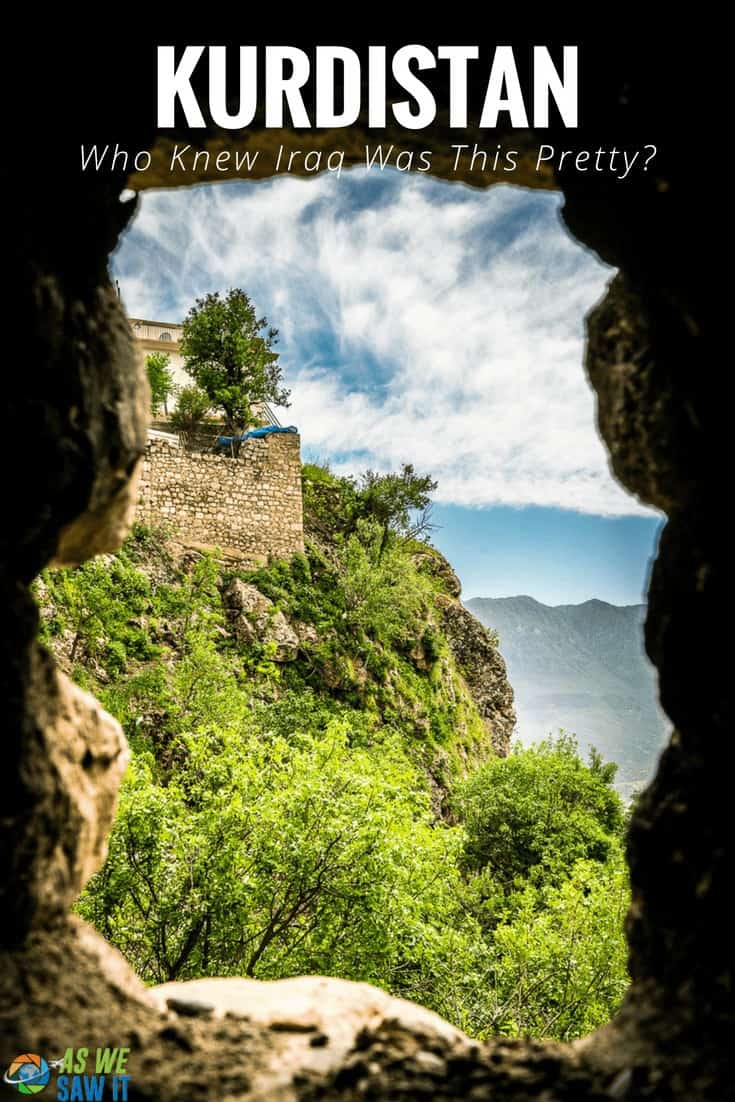

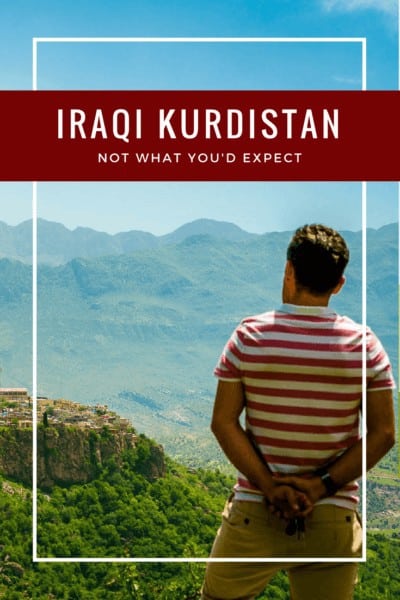
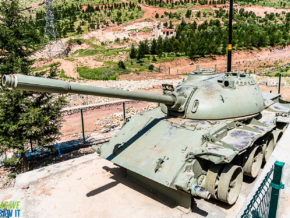
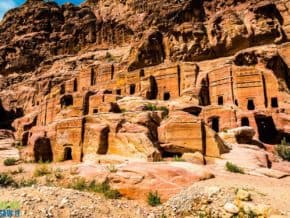
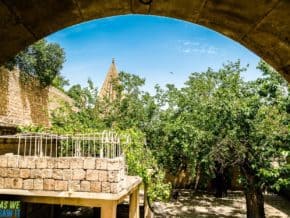
So beautiful to see me country through your eyes, thank you for sharing! I miss home now 😔
We’re so happy you enjoyed our story, Sara. We would really like to return and see the rest of Iraq, too. Hopefully, it won’t be long until it’s safe for tourists to visit.
Wow! So much great stuff here! Who doesn’t want to visit the birth place of human history! Great job!
Thanks, Eileen. We strongly believe it is a fatal mistake to blindly believe everything we are told. Far better to verify what we hear with firsthand experience, at least when it’s safe to do so. Kurdistan is an example.
It is good experience to travel to Kurdistan especially Erbil and Duhok. they are really safe, friendly and cheap as well. there are comfortable hotels. the Bazar is stunning.
It’s always nice to hear someone verify our opinions of Kurdistan, Mamo. We really enjoyed it. Thank you.